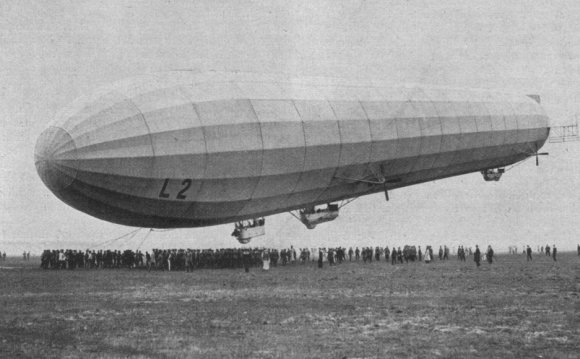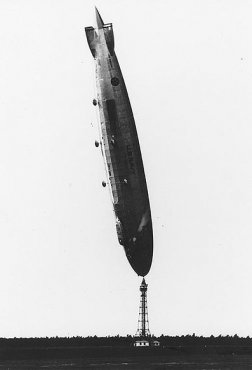
World War I was shaped by the new vehicles developed during the four years of conflict. A century after the start of the war, we’re looking back at the most remarkable vehicles—the planes, cars, tanks, ships, and zeppelins—it helped bring about.
World War I saw the rise of the submarine and the airplane as vital weapons of war, and even now they remain keystones of military might. The airship, on the other hand, became little more than a means of capturing fantastic aerial shots at the Super Bowl.
Although the zeppelin was embraced by both the Germans and the Allies during World War I, the Germans made far more extensive use of the rigid, hydrogen-filled airships. The concept of “strategic bombing”—targeted airstrikes on a particular location—didn’t exist before the conflict. The advent of aerial warfare changed that, and also robbed the British of the protection afforded by the English Channel. The zeppelin allowed Germany to bring the war to the English homeland. Kind of.

The airships of the era were in some ways more more capable than fixed-wing aircraft. They could fly higher, and farther, with greater payloads. But aerial raids were tricky. The large and slow airships flew at night and at high altitude to avoid being hit by artillery. That, however, made it hard for them to see their targets, and—given that this was the dawn of aerial bombardment—there was more than a little guesswork involved in knowing just how many bombs were needed to destroy whatever they were aiming at.
All these things aside, the airships were fantastically successful at at least one thing: scaring the hell out of people.
“They did more damage keeping people awake than actual physical damage, ” says Jeffery S. Underwood, a historian at the United States Air Force Museum at Wright-Patterson Air Force Base in Ohio. Zeppelins “scared the living daylights” out of the British. The Germans believed that bombing civilians would bring panic in the cities, leading the British government to collapse—or at least pull out of the fighting and leave the French on their own on the Western Front.
By the end of the war, however, the British had grown accustomed to the bombardments and begun taking precautions to protect themselves, lessons that would prove useful against much deadlier German aerial attacks during World War II.
Zeppelins were also used for surveillance. Both sides used them to spot submarines, which were nearly invisible to ships but relatively easily seen from the air. And airships were exceptionally useful for fleet maneuvers, carrying radios that could convey information to commanders on the ground. They also provided a measure of aerial protection for convoys. No less important was their tremendous cargo capacity. Zeppelins could carry men and munitions great distances, something that was not possible with the fixed-wing aircraft of the day.
Zeppelins remained popular after the war, and their development continued until the LZ 129 Hindenburg disaster in 1937. The crash, seen by millions of people in newspapers and newsreels, helped end the public’s interest in traveling by airship. Today, they are used largely for promotional flights (our most famous airship is without doubt the Goodyear blimp, the latest iteration of which is Wingfoot One) and industrial purposes, though lighter-than-air airships have drawn renewed interest as military surveillance and communications platforms, as well as for passenger transport.
Airships “had a usefulness when employed correctly, ” says Underwood, who notes that although the technology has advanced, what we’re doing today is “not a whole lot different from what they were doing” back then. Minus the scaring the bejesus out of people part.
RELATED VIDEO











